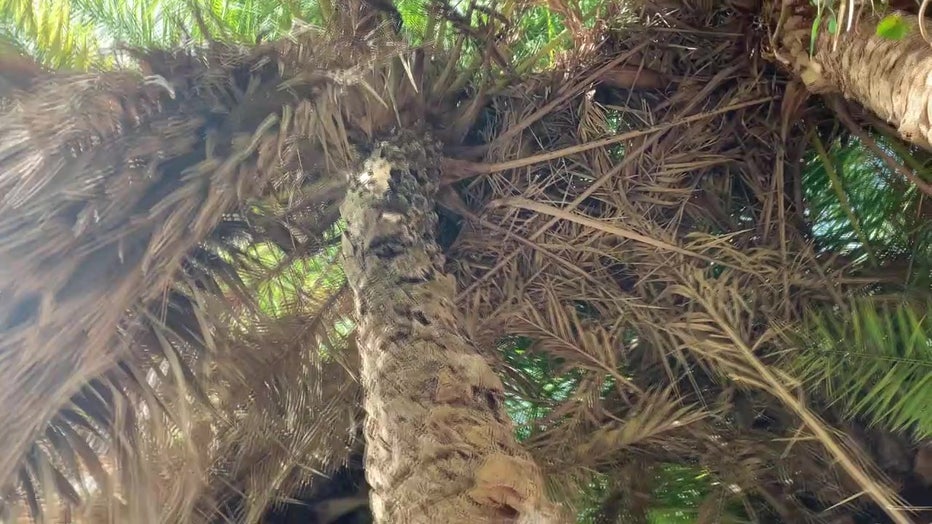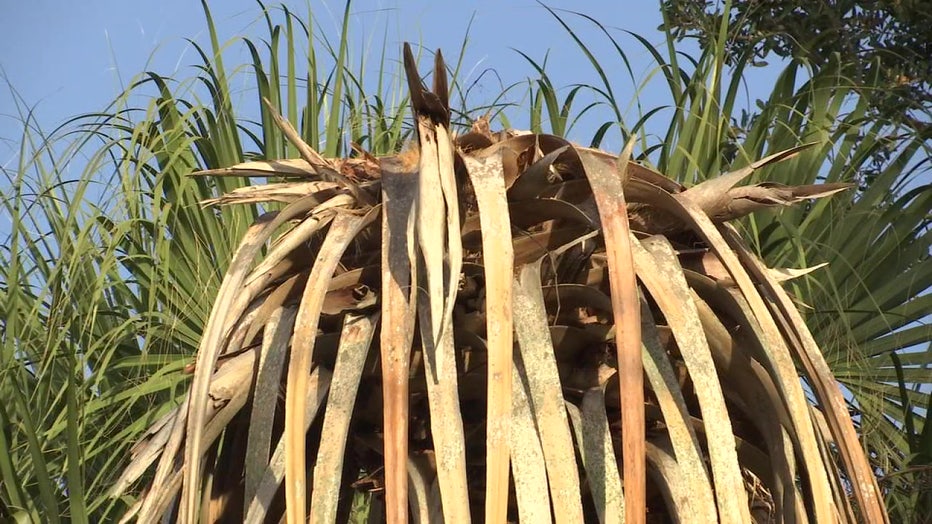Palms impacted by lethal bronzing should be removed to prevent spread, experts say
PALMETTO, Fla. - They stand tall, even majestic, and can stand up to most hurricanes. Nothing says Florida like beautiful palm trees, an iconic symbol of the Sunshine State’s tropical paradise.
But palms around Tampa Bay show warning signs of trouble.
They are under attack by a disease without a cure. Tens of thousands have already died and by the time you notice there's a problem, it's already too late to save them.
Over the last five years, the owner of Terra Ceia Bay Country Club in Palmetto, Jacques Panet has watched more than 150 palms die around his golf course.
"All the ones in the driving range, there was a dozen that were going and within a year they were literally gone," he explained. "We took all of them down because they’d be falling on people… The heads would fall right off, eventually, and they’re dangerous. That’s when we just realized we couldn’t really fight it. We had to keep going."
But that’s just a fraction of the tens of thousands infected and left dead across the state.

RELATED: Florida's iconic palm trees threatened by invasive disease
The culprit is the lethal bronzing disease.
"The palm tree dies very quickly and it browns from the bottom to the top and it does so quickly that it actually leaves sort of a bronze on the palms," explained Michelle Atkinson, an environmental horticulture agent with the University of Florida's Manatee County IFAS Extension Office.
She says signs to look for include an early fruit drop, the spear leaf at the top of the tree falling out, and eventually the bronze coloring of the fronds.
The disease is spread by an insect called a plant hopper. Once a tree is infected, its decline is noticeable in about three months.
"Basically infection with this phytoplasma is a death sentence," explained Dr. Brian Bahder, an assistant professor of entomology at the University of Florida. "Once a palm gets it, the palm will die from it."
Bahder studies the disease and the insect that carries it.

RELATED: Palm trees can be protected from lethal bronzing disease
Lethal bronzing was first discovered in Texas in 1970. In 2006, researchers in Florida discovered the disease in Manatee County in a palm planted by a Hillsborough County nursery.
"It has spread throughout the state. It seems to be spreading further faster to the south than to the north and we think that’s because there is a higher density and diversity of palms in the southern state," Dr. Bahder said. "It’s kind of comparable to a heart attack in humans. The blood vessels are just clogging up and the palm can’t handle it and it dies."
Lethal bronzing can infect up to 20 types of palms, including Phoenix, queen, and Florida’s state tree, the sabal palmetto, also known as cabbage palm.
There is no cure for the disease. Instead, experts say to remove the infected tree so it cannot further the spread of the disease.
Nearby uninfected trees may be treated with antibiotics injected every three to four months.
Dr. Bahder says research shows the insect carrier does not like intact, natural ecosystems, a hopeful sign for the everglades and state forests. Still, as lethal bronzing pushes south, there are no signs it will stop.
"Once we figure out how to effectively manage this insect, it will help us bring bronzing under control," Bahder said.
And that is still a work in progress. The antibiotic treatments can run anywhere from $50 to $100 per a treatment.
Badher says there is also a great concern about the diseases getting into some rare palm collections and botanical gardens within our state.

